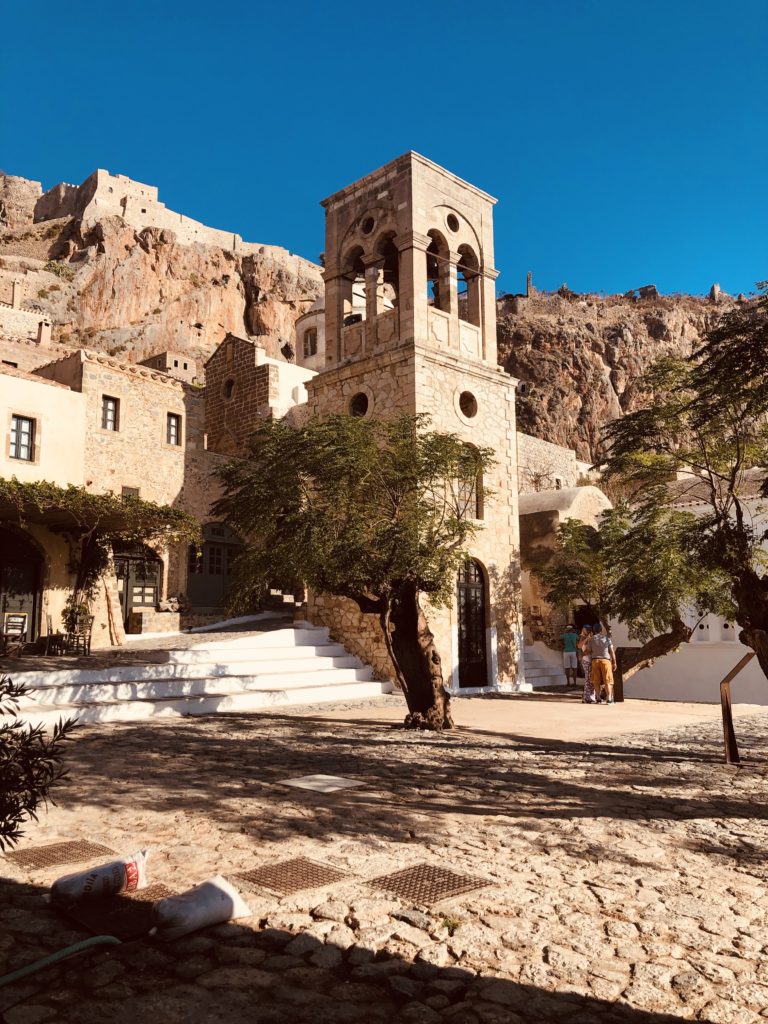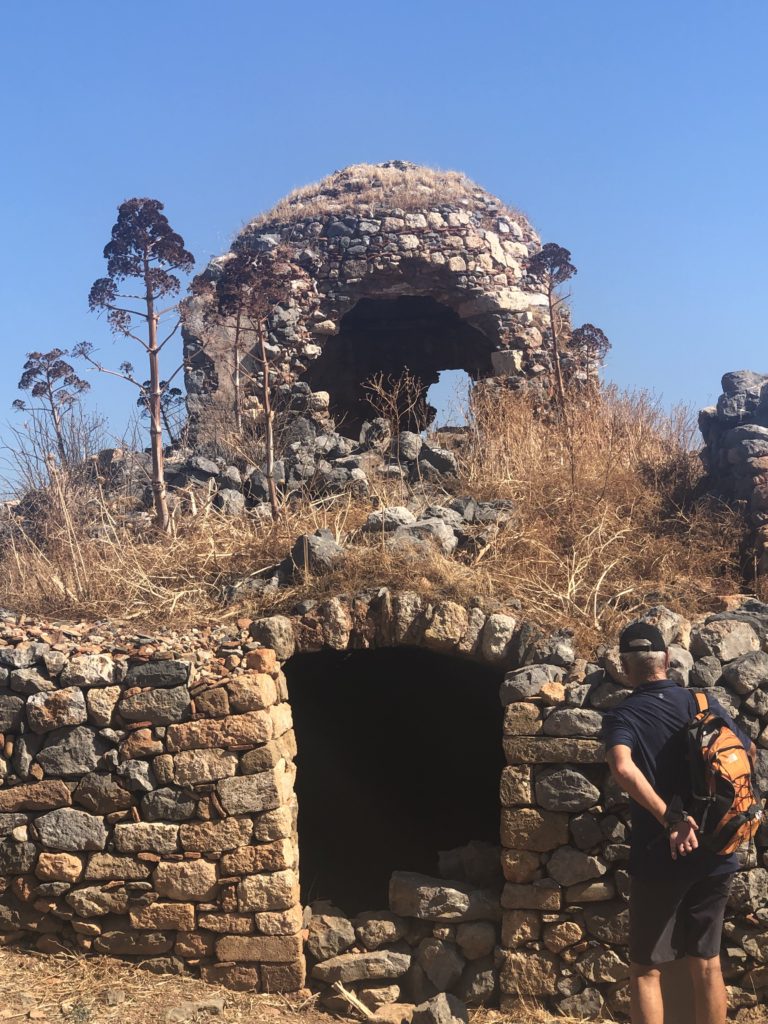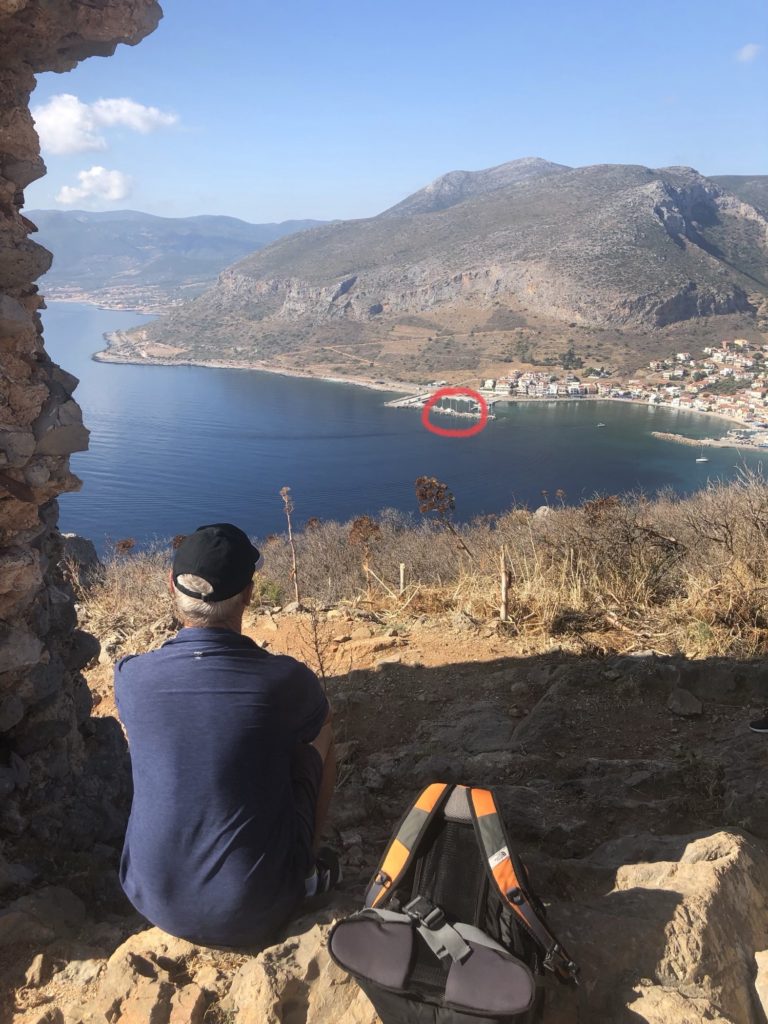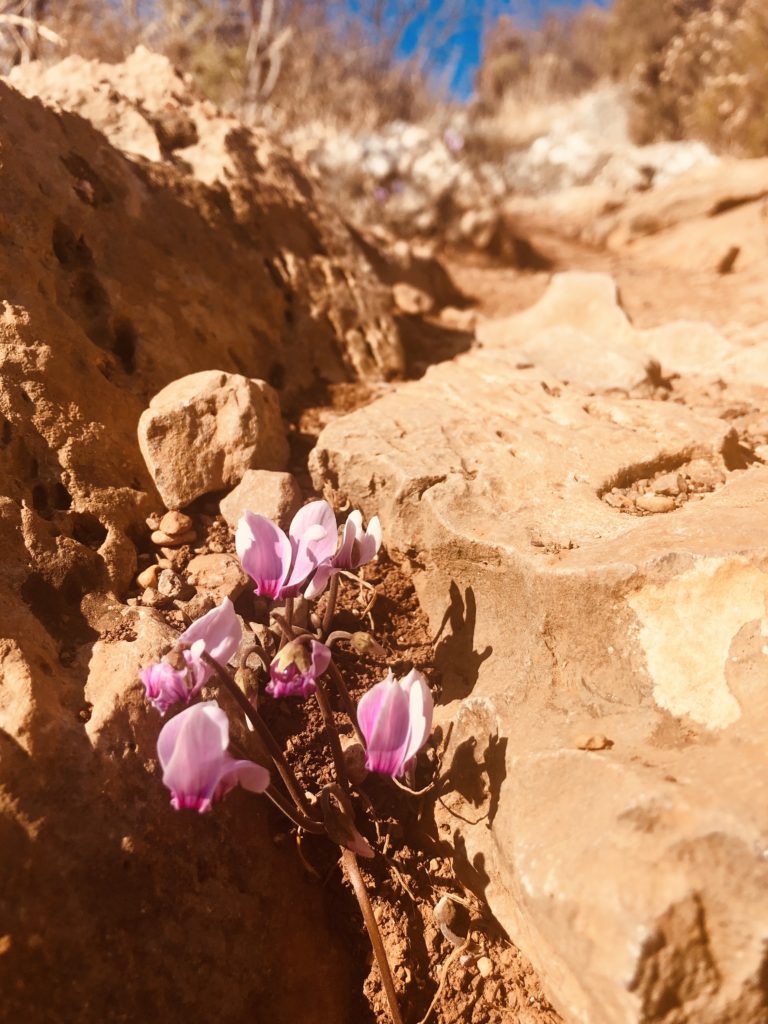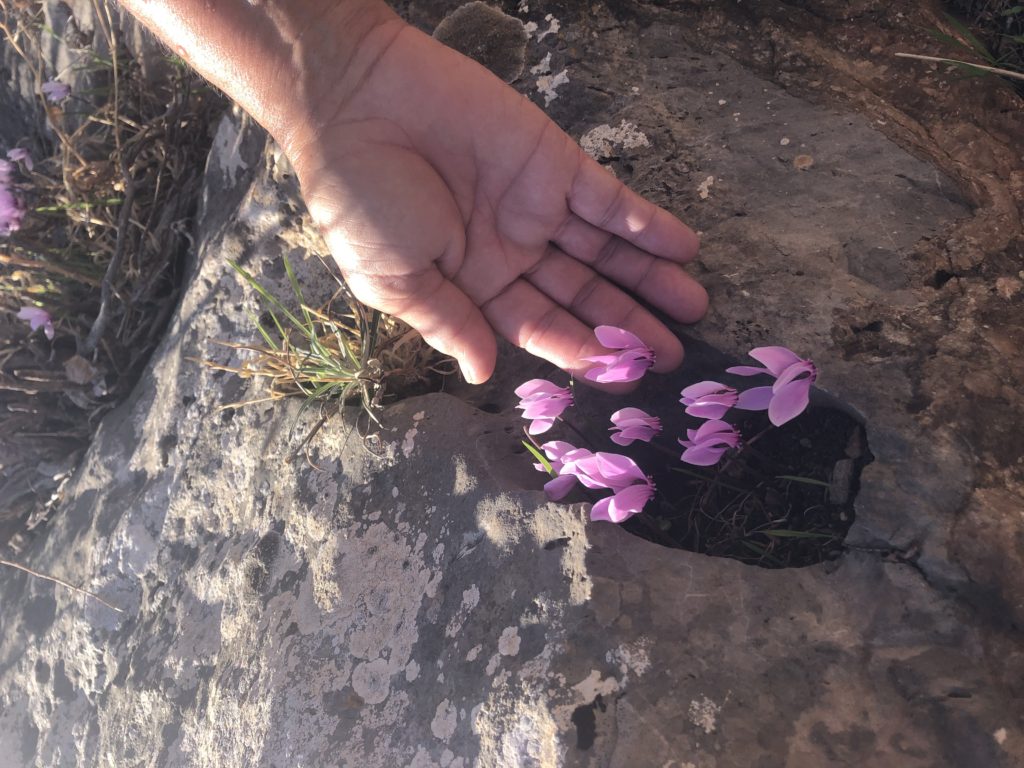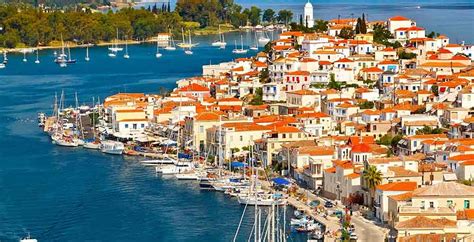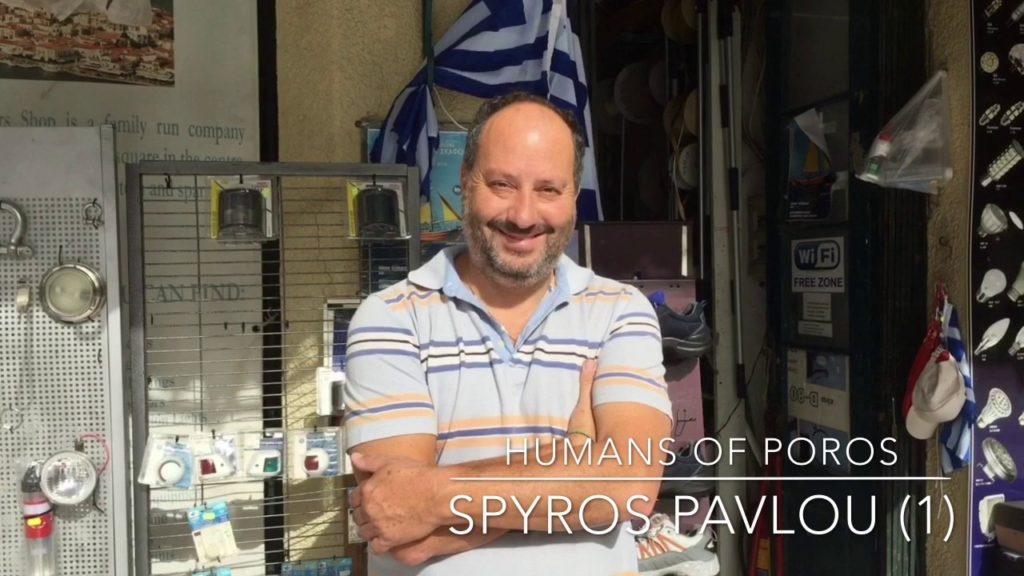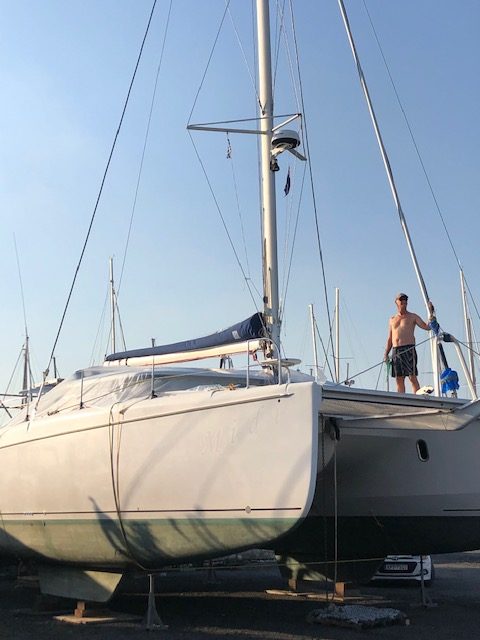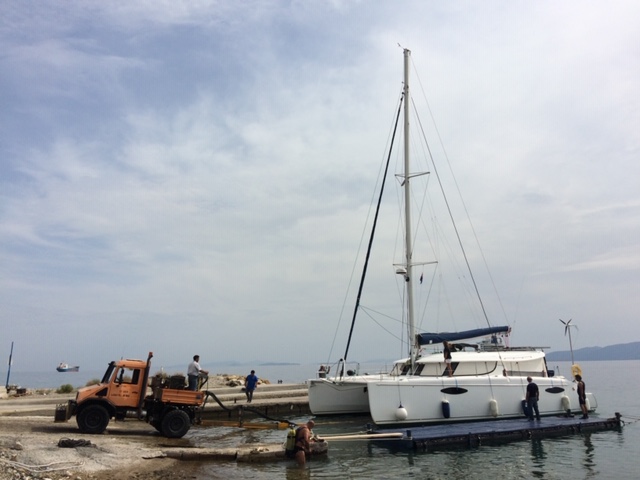and the end of another sailing season …
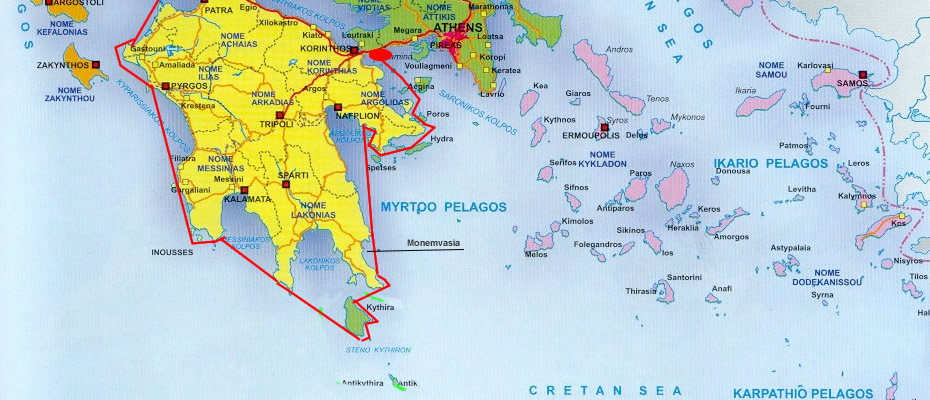
It was a 7 hour sail from Kithera to Monemvassia. We had some great wind at the beginning of the voyage and managed a very respectable 8.5 kts. As usually happens, the wind died out as the day wore on and we ended up motoring into the harbour at Monemvassia at 4.40 pm. We managed to snag the last spot ‘side to’ on the town quay which was a bonus as the anchorage is affected by a Nor-Easterly swell and can be very uncomfortable.

This was our 2nd visit to Monemvassia – last season we also spent time here on MACSEA. My apologies to those of you who have read this information previously.
The attraction here is the offshore island with it’s amazing ancient walled town and fortress connected to the mainland and modern town by a causeway which in ancient times was well guarded. The ancient fortress (castle) consists of the Lower Town, and the Upper Town all within the impressive stone wall. I was so impressed with this castle perched on the side of a huge lump of rock that I had to know more and after a bit of research we booked a personal tour with Effie, a guide who was an archaeologist working on the restoration of parts of the upper town of the Castle.
Geologically the rock was joined to the mainland Greece until an earthquake separated it except for a narrow isthmus which allowed access and was very useful for defense. The city, built in the 6th century AD, was populated by the inhabitants of Sparta. It was strategically important because of it’s position on the main maritime routes along the Mediterranean. This relevance ended in 1893 with the opening of the Corinth Canal. The castle is really a fortress totally enclosed on 3 sides with high stone walls and a single entrance gate into the Lower Town – hence the name. It once withstood a siege for 3 years which only finished because the food ran out.
The lower town is where the commoners and tradespeople would have lived and most of this town’s original houses have survived and are in use today as either homes or tourist accommodation. In its heyday the Castle had almost 14,000 inhabitants. No modern vehicles are allowed within the walls of the town (the streets/passageways are only 3 metres wide and some are very steep) so everything must come in via the gate carried by horses or people. This would certainly make living within the walls in modern times very trying. We saw tourists schlepping their bags up the road to the gate and then across the cobbles looking for their accommodations.
The town has no fresh water springs and relies entirely on rain water which is collected from roofs and directed into massive underground cisterns – all built when the city was founded. I asked Effie about sanitation – she replied that most properties had modern facilities but the disposal was via sea outlets as it had always been. If you own a ruin and want to rebuild you must produce original plans or drawings of the house, or build only in the style and materials of the original dwelling. No rocks or materials for the exterior are allowed to be brought into the town – use must be made of the existing original stones and materials ensuring the town is as authentic as possible.
Up the rock about 500 steps above the lower town is another defensive wall and the first of 3 gates with tunnels which must be passed through to reach the Upper town. The rich were certainly well protected. This area is no longer inhabited and is where the archaeological diggings are slowly uncovering churches, houses, military barracks etc. We saw the remains of a three storey house which would have belonged to a rich merchant or one of the nobility. The whole ground floor was a huge cistern formed using the natural rock, cutting into and then plastering the cistern to prevent water seepage. The first storey was built over this and would have included a kitchen (with it’s own access to the cistern in the floor), living/entertaining areas, and the top floor would have been sleeping areas. Only the stone structures remain – the rest requires imagination.

The whole of the Upper Town is on a fairly level summit but most of this is just overgrown ruins where you can wander about freely. No safety barriers etc – take note – personal responsibility – what a novel concept! I asked Effie about the lack of vegetation – everything is so brown. She said that the castle and the rock slopes come alive in spring and autumn with wildflowers and most especially purple cyclamen and was commonly known as “Menekse” (“Violet” in Turkish) for the profusion of pink cyclamen flowers and we were lucky they had just started appearing.
The castle was variously occupied by the Byzantines, Ottomans and Venetians before being the first city to be liberated by the Greeks during the War of Independence in 1821. This makes for interesting bedfellows – the Greek Orthodox Church just across a small square from the mosque.

During the Middle Ages, the city was renowned across Europe for its special sweet wine variety, known as “malvassia”. This was the Frankish word for Monemvassia. The grape originated from this area but was taken and grown in many other parts of the Mediterranean. In the last 10 years a young winemaker has tasked himself with making the Malavassia wine again, sourcing grapes from an original vine in the region and researching the authentic wine making techniques. It is now in limited production and unfortunately we did not get to sample it.
Today Monemvassia remains vibrant and thriving. The Castle’s main claim to fame is that is is has never ceased to be inhabited and there is an all round resident population of 15 hardy souls – me thinks winters here would be harsh. If you ever get the chance for a visit – take it.
On we pressed with only another week before our scheduled arrival in the boatyard for our haul-out and winter storage. We heard that one of our buddy boats, Licence to Chill, was going to be in Koilada for a couple of days before their haul-out so we did a long haul north to meet up and check their haul out facility. The sailing got a bit exciting dodging rain clouds with gusting winds – we recorded a very quick 9.8 knots. After a pleasant couple of days here we then headed off to Poros.
Spyros, the Poros Chandler, is one of John’s favourite Greeks so he was in heaven spending hours in the shop ordering things for RUKUS. This was the most expensive stop on our trip so far with a chandlery bill of EUR 497 (marine spare parts) and another EUR 500 to fill our fuel tanks with diesel.
Autumn has arrived with dull grey skies and the first rain we have experienced for months.
It must be time to put away our toys and head home.We arrived at the boatyard and hauled Rukus out on the 10th of October. Our good friends (of over 30 years), Russ and Cathie, were already in the yard with their boat Vanilla. We spent time helping each other out, hiring a car for an excursion to ancient Corinth and generally enjoying our week together.
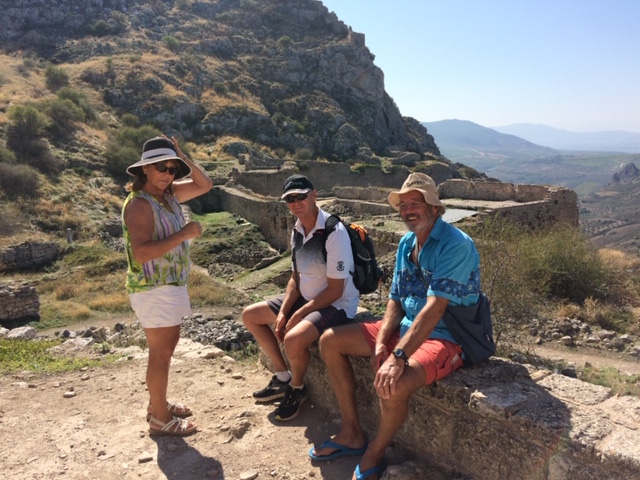
Robyn, John and Russell exploring Acrocorinth Castle 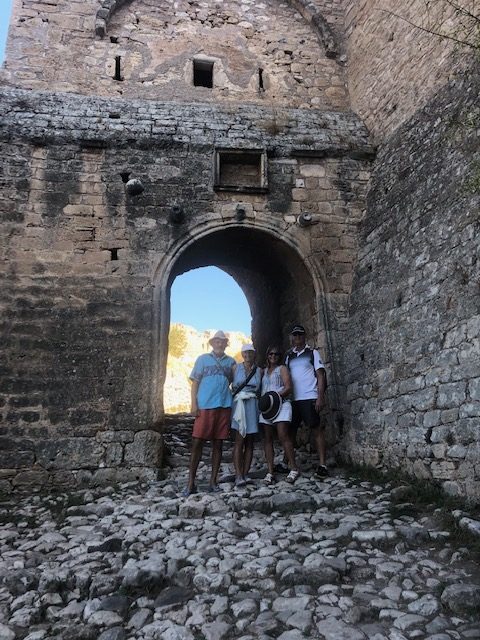
Castle gate, Ancient Corinth with Russ & Cathie from SY Vanilla. 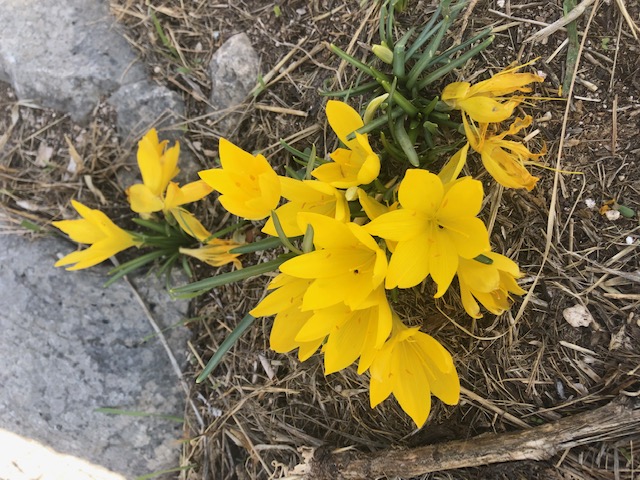
It’s autumn – crocus growing in the cracks of the rocks.
Packing up the boat for winter involves doing the regular engine maintenance (x 2), ‘pickling’ the watermaker, stowing the outboard motor and dinghy, removing the sails and stowing them in the hull, emptying water tanks, lots of cleaning, removing all open food containers, defrosting fridges (x 2) and covering as much of the boat as practicable with UV plastic sheets to protect from the airborne pollution which comes from the nearby oil refinery and the plastic also protects the gel-coat from the sun. We managed to have a nice new mattress made for our king size berth and also got new mirrors for the bathrooms. The whole packing up and winterizing process took us 6 days then it was off on the train to Athens airport for our long flight home. Although we are looking forward to seeing family and friends, and spending time at home over the antipodean summer, we are also excited to be coming back to Greece again next May! We’ll keep you posted ….
